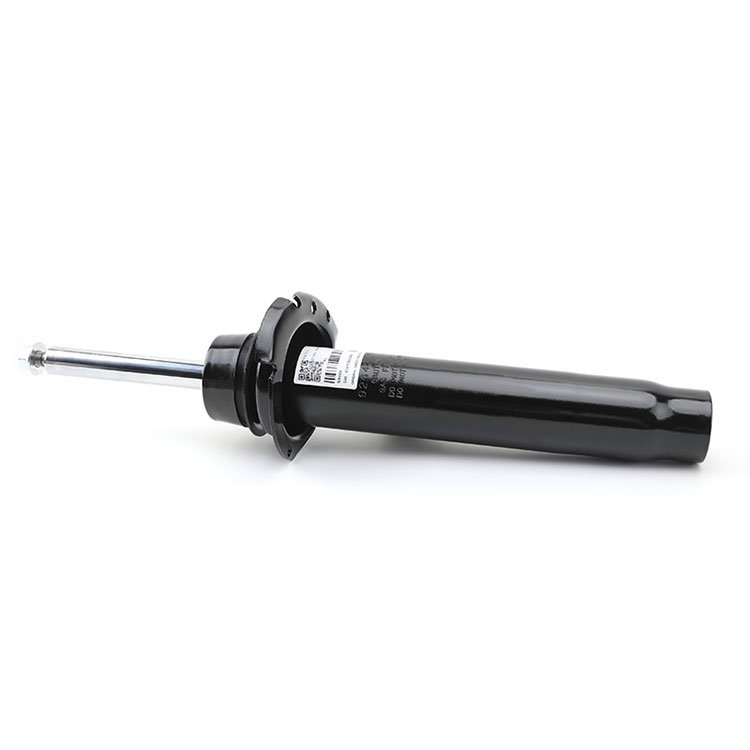Components of Auto Suspension Systems
2024-05-21
Auto suspension systems are integral components of vehicles that contribute to comfort, stability, and safety by controlling the movement of the vehicle's wheels in response to road irregularities and driver inputs. These systems consist of various components working together to absorb shocks, dampen vibrations, maintain tire contact with the road surface, and provide a smooth ride for occupants. Here's an overview of auto suspension systems:
Components of Auto Suspension Systems:
1. Springs:
- Coil Springs: Commonly used to support the weight of the vehicle and provide elasticity to absorb shocks.
- Leaf Springs: Found in older vehicles and heavy-duty applications, consisting of multiple layers of flexible metal strips.
- Torsion Bars: Long metal bars that twist to absorb and distribute forces.
2. Dampers (Shock Absorbers):
- Convert kinetic energy from springs into heat, reducing oscillations and vibrations.
- Improve handling and stability by controlling the rate of suspension movement.
3. Control Arms and Bushings:
- Connect the suspension components to the chassis and wheel assemblies.
- Allow for controlled movement while maintaining alignment and stability.
4. Sway Bars (Stabilizer Bars):
- Reduce body roll during cornering by transferring lateral forces between the left and right wheels.
- Improve stability and handling characteristics.
5. Struts:
- Combine the functions of a spring and a shock absorber into a single unit.
- Simplify suspension design and reduce weight in some vehicles.
6. Bushing and Bearings:
- Reduce friction and allow for smooth movement of suspension components.
- Absorb road vibrations and noise to enhance comfort.
7. Air Suspension Systems:
- Use compressed air to adjust the ride height and stiffness of the suspension.
- Provide customizable ride characteristics and can automatically adjust based on driving conditions.
Types of Auto Suspension Systems:
1. Dependent Suspension:
- Connects the wheels on each side of the vehicle, typically using a solid axle.
- Common in trucks, SUVs, and some older passenger cars.
2. Independent Suspension:
- Allows each wheel to move independently, improving ride quality, handling, and traction.
- Includes various designs such as MacPherson strut, double wishbone, and multi-link.
3. Active Suspension:
- Uses electronic sensors, actuators, and adjustable components to actively control suspension stiffness, damping, and ride height.
- Enhances ride comfort, stability, and handling by continuously adapting to changing road conditions.
4. Passive Suspension:
- Operates without electronic or hydraulic control systems, relying on mechanical components like springs and dampers.
- Provides a simpler and more cost-effective solution for many vehicles.
Functions and Benefits of Auto Suspension Systems:
1. Ride Comfort:
- Absorb shocks and vibrations from road irregularities, providing a smooth and comfortable ride for occupants.
2. Vehicle Stability:
- Maintain tire contact with the road surface, ensuring optimal grip and handling characteristics.
- Minimize body roll during cornering, improving stability and control.
3. Safety:
- Enhance vehicle stability and control, reducing the risk of accidents and improving driver confidence.
- Improve braking performance by keeping the wheels in contact with the road.
4. Traction and Handling:
- Optimize tire grip and traction under various driving conditions, including acceleration, braking, and cornering.
- Provide responsive and predictable handling characteristics for enhanced driving dynamics.
5. Load Carrying Capacity:
- Support the weight of passengers, cargo, and towing loads while maintaining ride quality and stability.
Maintenance and Troubleshooting:
1. Regular Inspections:
- Check for signs of wear, damage, or leaks in suspension components, including springs, dampers, and bushings.
- Ensure proper alignment and tire wear patterns to detect suspension issues early.
2. Replacement and Repair:
- Replace worn or damaged suspension components promptly to prevent further damage and maintain vehicle safety and performance.
- Follow manufacturer recommendations for suspension maintenance and service intervals.
3. Alignment and Balancing:
- Ensure proper wheel alignment and tire balancing to prevent premature wear and tear on suspension components and tires.
4. Diagnosis of Symptoms:
- Address symptoms such as excessive body roll, bouncing, noise, or uneven tire wear through thorough diagnosis and repair of underlying suspension issues.
Conclusion:
Auto suspension systems play a crucial role in ensuring comfort, stability, and safety in vehicles of all types. By effectively absorbing shocks, controlling body movements, and maintaining tire contact with the road surface, suspension systems enhance ride quality, handling, and overall driving experience. Regular maintenance, inspection, and timely repair of suspension components are essential to ensure optimal performance, longevity, and safety of the vehicle.



